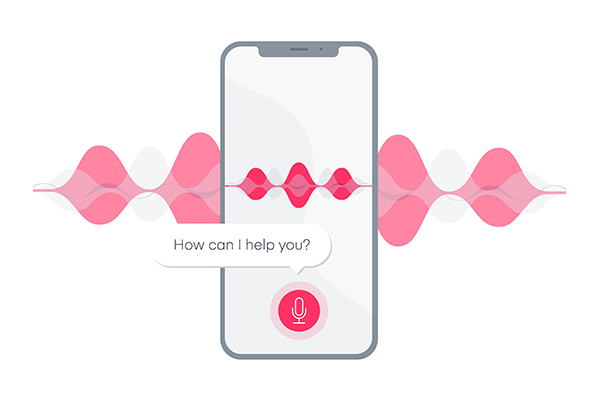Voice User Interface And UX: A New Star Trek In The Digital Empire?
Interface design enhances humans to experience and interact with advanced technology. Interestingly, Voice User Interface, or VUI, is the ability to speak to devices and its potential to understand and act from users’ commands. Let us discuss Voice User Interface and UX in this session.
What is VUI?
The rise of voice is the evolution of AI and cloud computing abilities. With machine learning algorithms, Neural networks, and natural language processing, technology now has the ability to communicate human speech more accurately and in the real world. The prior versions of UX on GUI or Graphical User Interface for the visual interfaces. replaced Voice User Interface or VUI that acts as a reciprocal interface between the command platform and the user. VUI is becoming the next generation of human-computer. it works in interaction, the act of using voice commands becomes increases for users.

Voice-based design process
Going the guidelines from the experts in the field here is the complete template to the voice-based design process and see given below:
1. Research
Identifying and researching the target audience of a product should be one of the magnificent steps in the design process. Look at the current experience and how the users are solving their troubles now. By identifying pain points, you will find out and where the voice can benefit your users. And the User language helps to exact matching phrases that a target user uses when they speak with other people. This information will help us to design a system for different observations.
2. Define
Before some scenarios come from specific ideas for the app, And a way to think about the reasons someone might have to use a VUI. You need to design scenarios that have high value for your target audience. If you have many scenarios and do not know which is important and which is not, create use case studies to evaluate each situation. The techniques will show you what situations are necessary, what are secondary, and what are nice-to-haves.
3. Create
The first step is to tackle the voice user flows of your experience, which is the basis from which all user interaction will map back. Use Storyboards to visualize interactions and flows in context and feel more realistic. another way is to Write Dialogues, writing Dialogue are the building blocks of voice user interface and UX flows.
4. Error handling
No matter how good your VUI will be, one thing is for sure: when things will go wrong. you must design for those scenarios. Graceful handling of bugs is one of the challenges you will face when designing for voice and important to start thinking about it at the right time when you write your dialogues.
5. Test
Testing is the most important part of the design process. Without testing, you can’t definitely say whether your app will work for your users or not. The way such as Conduct usability testing, Test Your Prototypes with Target Users, Use Test Simulators and This work will give you a good voice experience in the real world.
6. Refine
Define the voice application after transferring it to the world. Collect Analytics From intents and utterances, user engagement metrics, behavior flows.

The next-gen of UX
UX was designed to make interactions to the real world and voice has able to make that a reality. UX designers must make sure, asking the right questions to elicit the appropriate verbal replies from users.
Rules for implementing voice search UX
1. A natural way of interaction
In this age of expected instant gratification, it is hard to imagine an average user calmly listening to their AI assistant as it relates a list of all continental restaurants one by one. We want voice interactions to be human alternatives.
2. Voice user interface and UX design for flow
Speech recognition viable approach could be to prioritize and encapsulate the information based on known user tastes, before delivering a solution. in other words, doing what a normal person would naturally do in a conversation.

3. Designing
For web and application designers, voice interaction, UX is the biggest challenge for the web and application design process. Every voice recognition platform has a variant of technical constraints. It is most important that you believe these constraints when architecting a voice interaction UX.
Conclusion
Make sure that you and your brand are not in the bracket of “ourselves”. Hop directly to the voice teach and experience the journey with Alexa, Google, Cortana, and Siri! You can’t believe your audience to waste time twiddling their thumbs any longer. They may be voicing out their opinions, and your Sire might want to pay near attention. You are searching for a destiny this is AI- blessed and will try to provide not anything short of classy, custom-designed solutions to every one of your issues. In that way, we aren’t some distance far from Tony Stark’s Jarvis!








Leave A Comment
You must be logged in to post a comment.